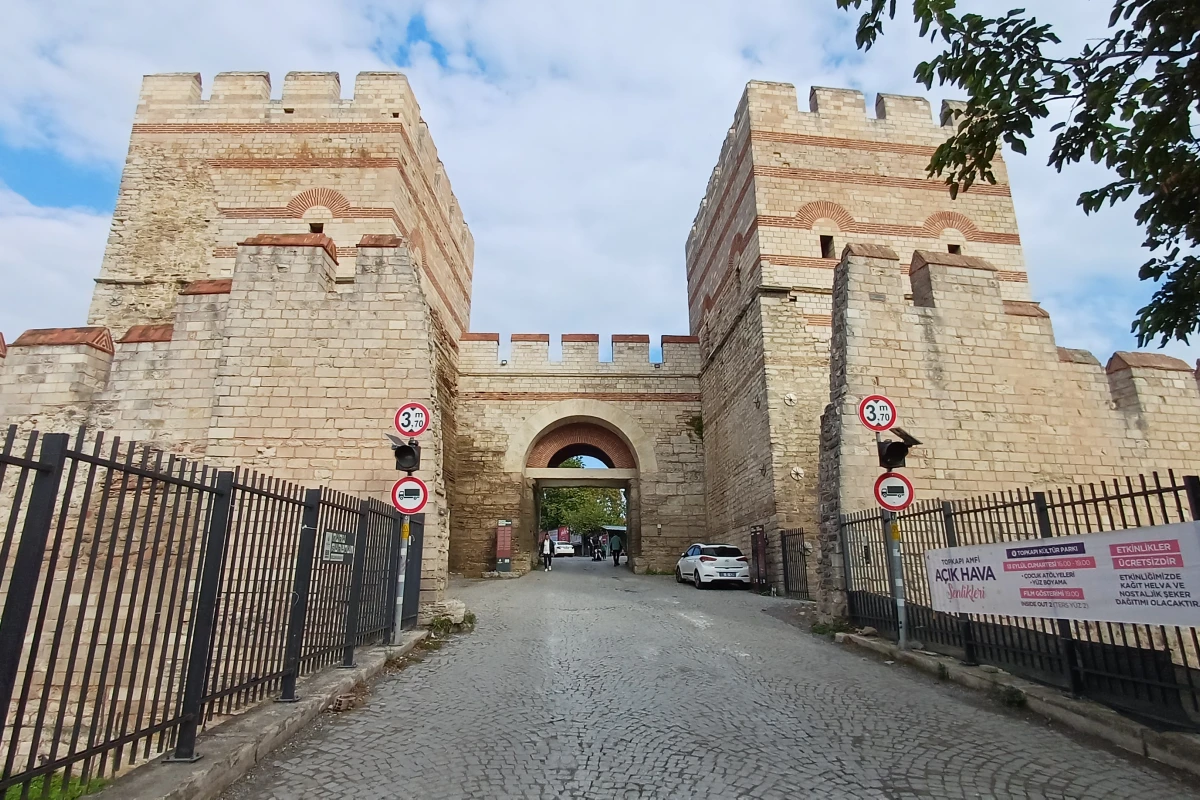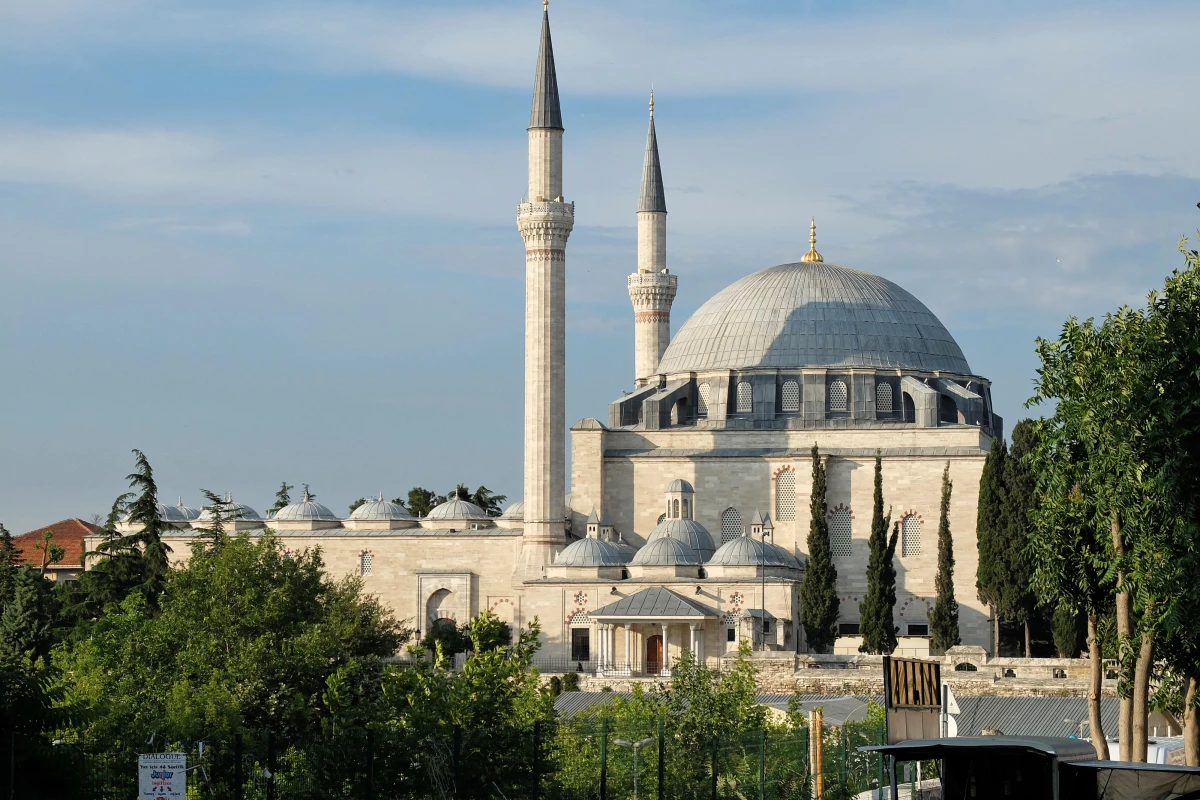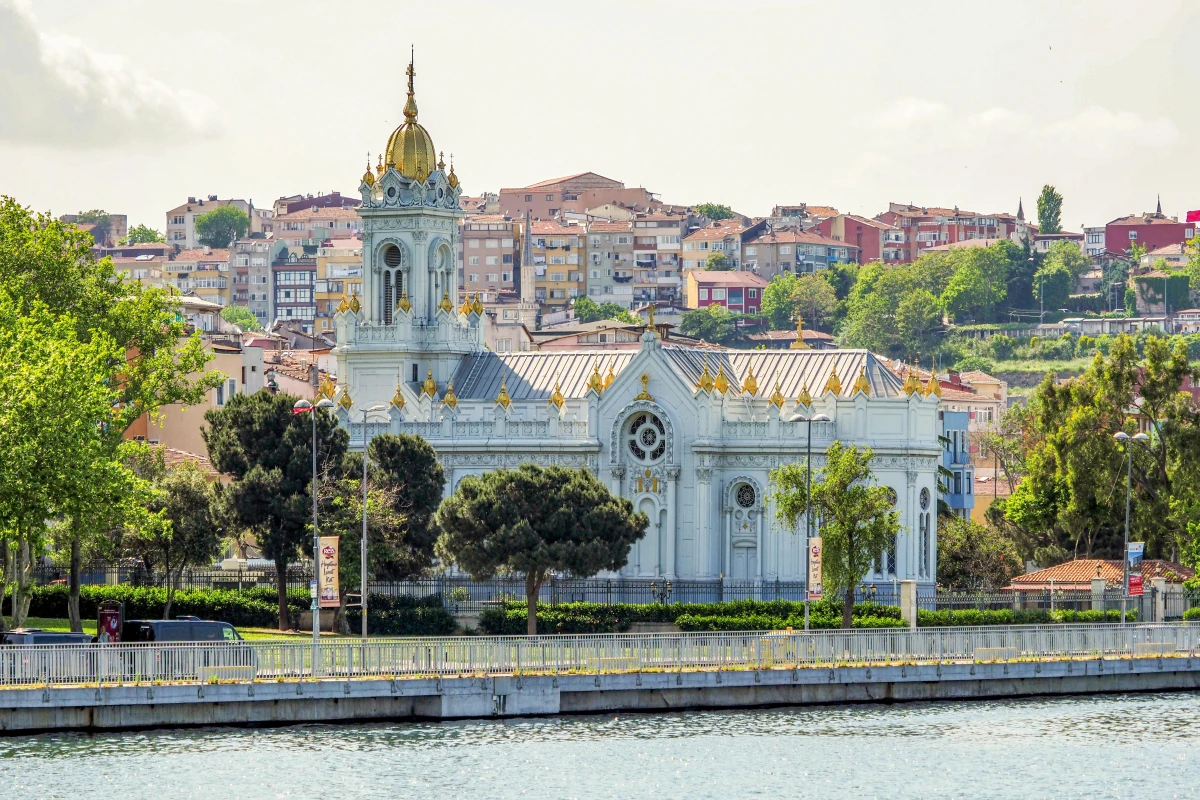Where Rome ended, and Byzantium began.
🏛 Where Stones Became Shields
When you first lay eyes on the Walls of Constantinople, a UNESCO World Heritage Site, you're no longer just a visitor in Istanbul; you’re a witness to 1,600 years of imperial resilience. Stretching over 6.5 kilometers from the Marmara Sea to the Golden Horn, these monumental walls protected the city from invaders, natural disasters, and even time itself.
But why should anyone care about old bricks?
Because these were no ordinary city walls! They were the outer armor of the Eastern Roman Empire, later known as Byzantium. A fortress that shielded a civilization, its emperors, and its faith for over 1,000 years.
👑 Born from Crisis: The World Behind the Walls
The Theodosian Walls weren’t just a response to invasion: They were a product of survival, faith, and imperial ambition.
After the death of Theodosius I in 395 AD, the Roman Empire split for good. His son Arcadius ruled the East from Constantinople, but real power lay in the hands of ambitious generals and ministers like Rufinus and Gainas, the latter a Gothic warlord whose short-lived dominance exposed tensions between Roman elites and foreign federates.
Amid court rivalries, Empress Aelia Eudoxia clashed with Archbishop John Chrysostom, whose sermons denounced imperial excess. The city's political and religious foundations were shaky: Constantinople needed more than divine favor. It needed protection.
That came under Theodosius II (r. 408–450 AD), a child emperor whose reign was guided by his formidable sister, Pulcheria. A deeply pious and politically shrewd woman, Pulcheria shaped both imperial policy and religious orthodoxy, even helping organize the Council of Chalcedon (451 AD).
It was during this transformative period that Constantinople’s triple-layered land walls were built, completed by 447 AD. These weren’t just defenses against Huns and Goths—they were statements of intent. A new Rome had risen, and it would not fall easily.
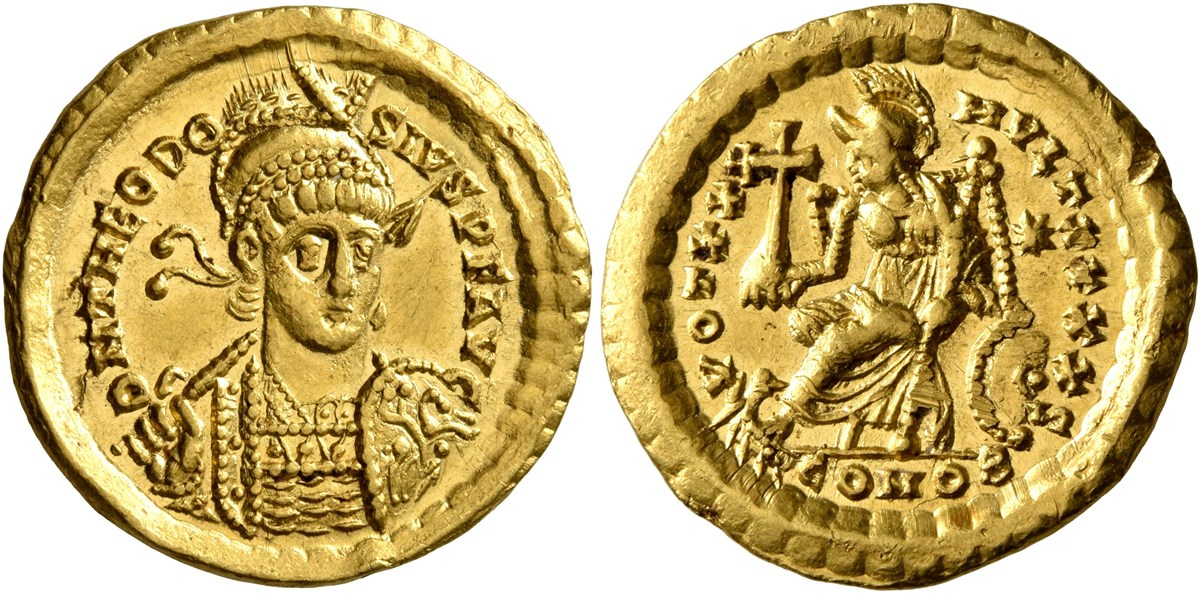
Gold coin of Emperor Theodosius II — photo by Byzantium565, CC BY-SA 4.0.
🛡 The Engineering of Empire
Built between 413 and 447 AD, the Theodosian Walls became one of the greatest military fortification systems in the world. The structure included:
- A moat over 20 meters wide and 7 meters deep.
- An outer wall, nearly 2 meters thick, with towers spaced every 50–60 meters.
- An inner wall, rising to 12 meters high and 5 meters thick, fortified by 96 towers.
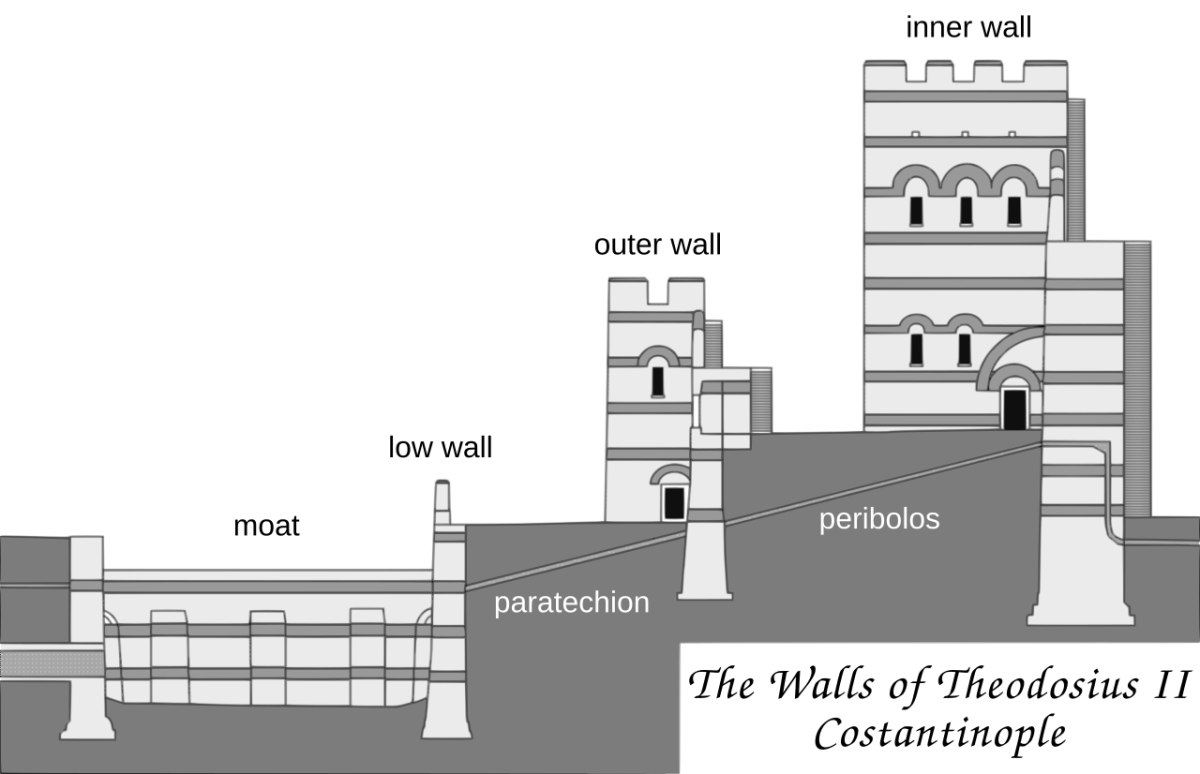
The scheme of the Walls of Constantinople. Image by Glz19, CC BY-SA 4.0.
This triple defense system was so effective that Constantinople resisted every siege for a thousand years—until the age of gunpowder arrived.
🧭 Key Sites to Explore Today
Here’s your guide to the surviving segments:
🏰 Yedikule Fortress (Seven Towers): Once the grand Golden Gate, where Roman emperors entered the city in triumph, Yedikule Fortress was transformed by the Ottomans in 1458 into a defensive stronghold and later a notorious state prison. Today, visitors can climb its imposing towers for sweeping views of the Marmara Sea, making it one of the most dramatic and historically rich stops along the ancient walls.
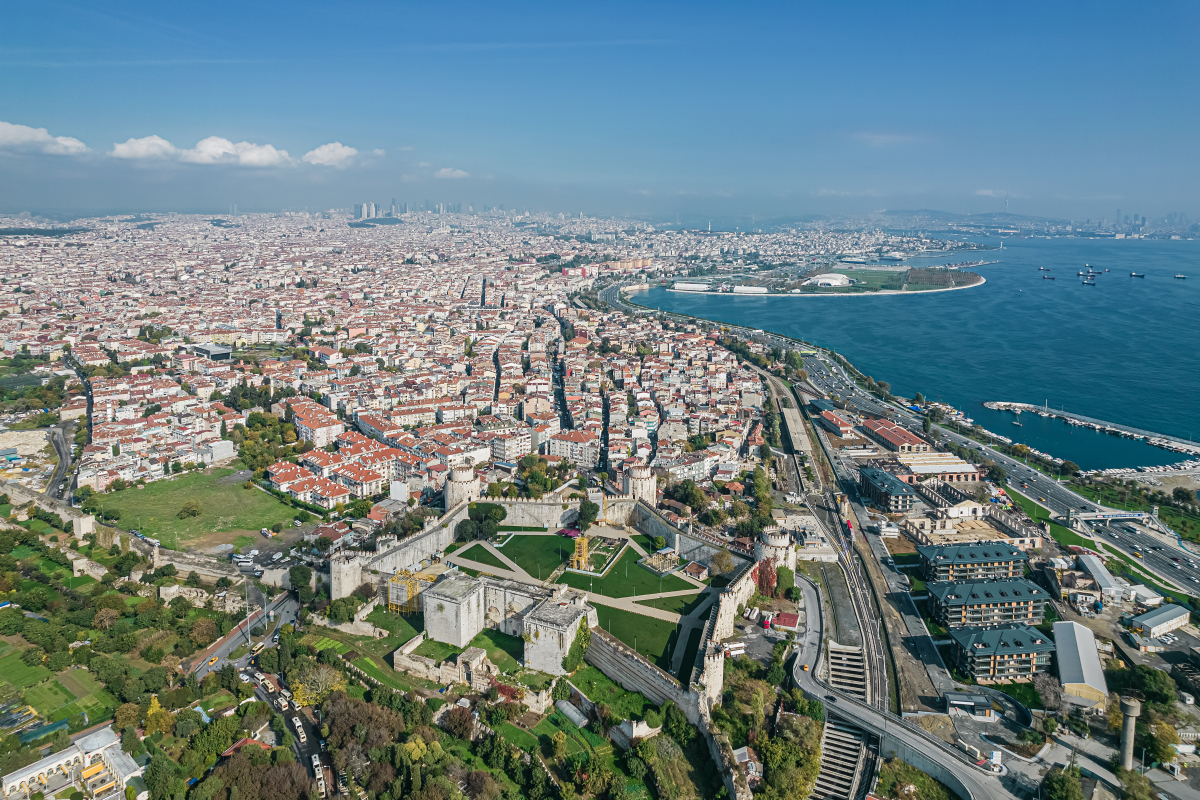
Aerial photo of Yedikule Fortress by A.Savin, Wikipedia. Licensed under the Free Art License.
🚪Belgradkapı (Belgrade Gate): Located near Kazlıçeşme Marmaray Station, Belgradkapı takes its name from the Serbian population relocated here after the Ottoman conquest of Belgrade in 1521. Today, it remains one of the most peaceful and well-preserved sections of the Theodosian Walls. With its quiet atmosphere, local homes, and scenic stonework, it's a perfect spot for those seeking a more intimate glimpse into Istanbul’s layered history.
🚪 Topkapı & St. Romanos Gate: Located near the Topkapı Tram Station, this is the legendary breach point of 1453, where Sultan Mehmed II's forces entered Constantinople. The preserved wall damage makes it a powerful photo spot, offering a tangible link to the city’s most transformative moment.
🕌 Edirnekapı Gate: This historic gate connects visitors directly to the Mihrimah Sultan Mosque, a masterpiece by Mimar Sinan, and provides easy access to the Chora Church / Kariye Mosque, renowned for its Byzantine mosaics and frescoes. It’s where Ottoman and Byzantine legacies intertwine.
🏞️ Ayvansaray & Blachernae Palace Ruins: Located at the northern edge of the walls near the Golden Horn, this area once housed imperial Byzantine palaces and late-period fortifications. Today, it offers a peaceful and atmospheric experience, perfect for photography and quiet exploration away from the crowds.
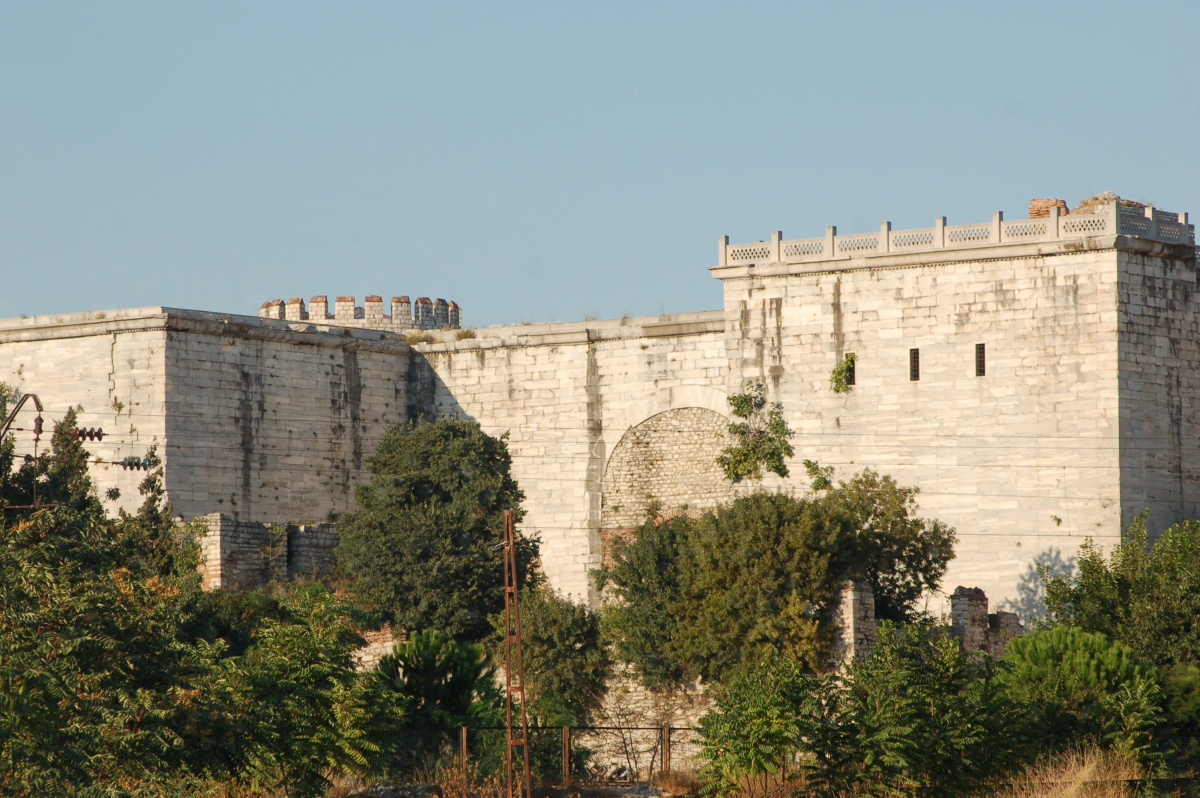
Photo of the Golden Gate of Constantinople by Greenshed. Public domain.
🧭 Plan Your Visit
| 🔍 Feature | 📍 Details |
|---|---|
| Best Entry Points | Yedikule (south), Topkapı (center), Ayvansaray (north) |
| Public Transport |
|
| Opening Hours | Open air walls: 24/7 Yedikule Fortress: :10 am to 4 pm (Closed Mondays) |
| Entrance Fees |
|
| Best Time to Visit |
|
🎒 Pro Tips for Travelers
🚶♂️ Walking the Walls: Some portions are walkable, especially near Edirnekapı. Wear comfortable shoes and bring water.
📸 Instagram Spots: The crumbling towers of Sulukule and the view from Yedikule’s bastions are unreal.
🧭 Add Nearby Gems:
- Chora/Kariye Mosque: Byzantine art treasure, a former church, and now serves as a mosque.
- Mihrimah Sultan Mosque: Ottoman elegance with skyline views.
- Samatya: Local taverns and seafood joints are just a short stroll away.
📌 Location Overview
Start: T5 Yedikule Tram Station
End: Ayvansaray Pier (Golden Horn Ferry)
Length: ~6.5 km (can be done in 2–3 hours with breaks)
🧭 Summary: Why You Shouldn’t Miss It
🏛️ See the world’s longest-surviving ancient city walls.
📖 Walk the path of emperors, crusaders, and sultans.
🌉 Explore a living museum that still frames Istanbul’s heartbeat.
📸 Perfect for off-the-beaten-path photos and history lovers.
🕌 Combine it with iconic mosques, palaces, and Byzantine art nearby.


